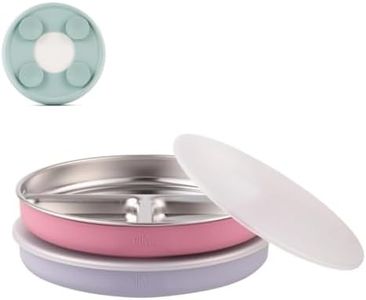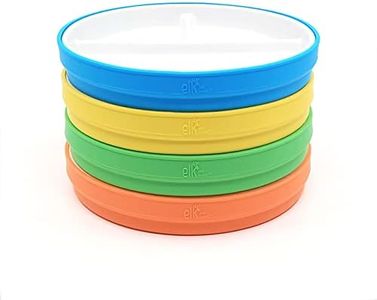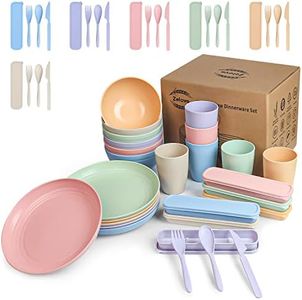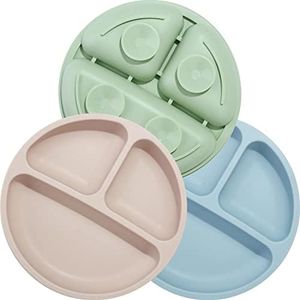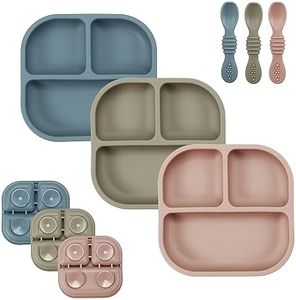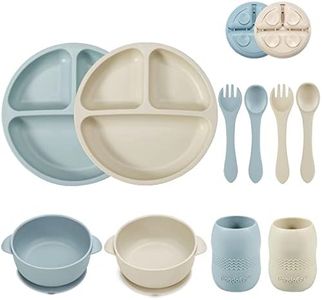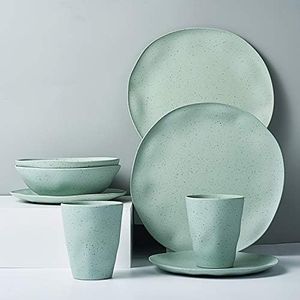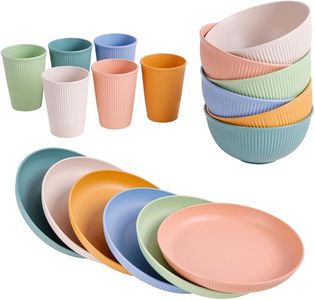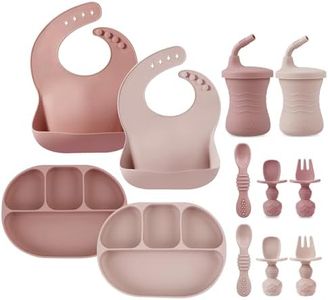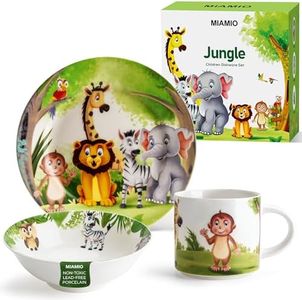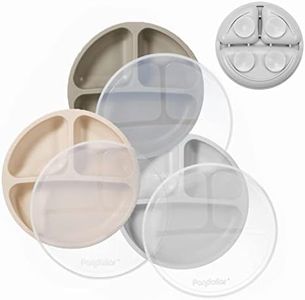We Use CookiesWe use cookies to enhance the security, performance,
functionality and for analytical and promotional activities. By continuing to browse this site you
are agreeing to our privacy policy
10 Best Non Toxic Dinnerware For Kids
From leading brands and best sellers available on the web.Buying Guide for the Best Non Toxic Dinnerware For Kids
Choosing non-toxic dinnerware for kids is an important decision because it helps protect children from harmful chemicals while eating or drinking. Kids’ plates, bowls, and cups shouldn’t just be cute or sturdy — their safety and material composition matter a lot. When shopping, focus on understanding which materials are safest, how easy the dinnerware is to clean, and whether it’s designed for the way your child eats and drinks. Consider if your child is an energetic toddler prone to throwing things, or an older child who just needs something reliable for everyday meals. Each family has different needs, so matching your dinnerware choice to your daily habits will help you make the best decision.Material SafetyMaterial safety is all about what the dinnerware is made from, and how that impacts your child's health. The main things to avoid are lead, BPA, phthalates, and melamine—chemicals that can leach into food, especially when heated. Safe, non-toxic options include stainless steel, silicone, bamboo without added chemicals, or high-quality food-grade plastics labeled BPA-free. When checking this spec, look for labeling or certification that confirms non-toxic materials. Younger kids who might chew on their plates or bowls benefit most from the strictest materials, while older kids may have more flexibility if they don’t put everything in their mouths.
Durability and Drop ResistanceDurability refers to how well the dinnerware stands up to everyday use, including being dropped or thrown. Breakable materials like glass or ceramic might look nice but are usually not suitable for kids who are learning to eat independently. Unbreakable options like silicone and stainless steel are great for little ones who are still figuring out mealtime. For more coordinated kids, lightweight but sturdy materials are still sensible, but you can be a bit more flexible. Think about your child’s habits: if they’re accident-prone or energetic, prioritize robust, shatterproof options.
Ease of CleaningCleaning dinnerware matters because ease of cleaning helps keep things hygienic. Some materials, such as silicone and stainless steel, are generally dishwasher-safe and resist staining, making them easy to clean. Bamboo or natural fiber dishes can sometimes require hand washing and may stain or hold onto odors over time. If you want to save time and effort, prioritize dishwasher-safe options and those that do not easily absorb food colors and smells. If you won’t mind extra care, natural materials can work, especially if they’re eco-friendly, but be prepared for a little extra maintenance.
Size and ShapeSize and shape refer to how big or deep the plates, bowls, and cups are, and whether they’re divided or flat. Younger children, especially toddlers, do better with smaller, deeper bowls and plates that prevent food from easily sliding off, and sections can help separate different types of food. Cups with handles and a sturdy base are easier for little hands. As your child grows and their coordination improves, you can gradually move to larger, open dishes similar to standard tableware. Consider your child’s age and eating habits to pick the options that help them eat more independently with less mess.
Compatibility with Food Types and TemperaturesNot all dinnerware is safe for both hot and cold foods; some materials may release chemicals or warp when heated. Look for items labeled as safe for hot foods, microwave, and freezer use if you plan to serve warm meals or pre-prep and store leftovers. Silicone and stainless steel often handle a wide range of temperatures. If you do not need to heat meals directly in the dish, you can be more flexible, but for busy families warming up food often, heat resistance is very important for safety and convenience.
Design and UsabilityDesign and usability cover features like grip, stackability, or suction bases that prevent plates from sliding. Suction-bottom plates are useful for little kids who are just learning and might knock things over. Ergonomic designs — easy to hold, with curved sides or non-slip surfaces — can help kids be more independent during meals. Pick features based on your child’s development stage and whether you want the dinnerware to encourage self-feeding or just make less mess at the table.
